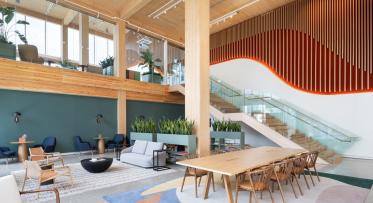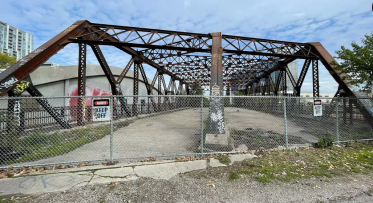Taking Pride in Our Waterfront
As the stewards of Toronto’s waterfront, we’re committed to building a city that is happier, healthier and more prosperous for all of us.
POSTED: FEBRUARY 21, 2017 I PARKS AND PUBLIC SPACES, DESIGN, INFRASTRUCTURE, INNOVATION, PUBLIC ART, SUSTAINABILITY, TECHNOLOGY, WALKABLE NEIGHBOURHOODS
By Christopher McKinnon
Since its creation in 2002, Waterfront Toronto has been hard at work making Toronto’s post-industrial waterfront a place that we can all be proud of. Some of our most visible work has been projects that turned old parking lots and abandoned lands into dynamic new spaces for people. From the cotton-candy-pink umbrellas and sugary white sand at Canada’s Sugar Beach to the chirping crickets and frogs of Corktown Common’s wetland, you can feel the change in a much more palpable way.
When planning our new waterfront communities, we’re focused on creating people-first neighbourhoods that are livable, beautiful, and built to last.
Our first planned community, the West Don Lands, will ultimately be home to over 6,000 new residents – so far, about one third of those have already moved in, alongside a diverse range of retailers and the Cooper Koo YMCA. The neighbourhood’s low-rise and mid-rise condominiums and townhomes are an example of the kind of gentle density that supports vibrant street life. Strolling down the generous Front Street Promenade, you’ll find several public art installations – all part of our West Don Lands Public Art Strategy.
Public art was considered carefully in the early planning phases of the West Don Lands. As we designed the public realm – streets, overpasses, parks and other public spaces – we proactively identified high-impact locations for new public art commissions.
While those are some of the very visible manifestations of Waterfront Toronto’s work, there are plenty of projects that you just can’t see so easily. Much of our waterfront land was contaminated as a result of the history of industry and the fact that virtually all of the land south of Front Street today was formed through lakefilling. Waterfront Toronto plays an important role in remediating contaminated lands so that they can be converted into new, mixed-use communities. We’ve also played a role in putting in place important flood protection measures – Corktown Common, the 18-acre park at the heart of the West Don Lands, is built on top of a giant berm that protects Toronto’s downtown if the Don River ever floods.
Today, with climate change and extreme weather looming large, planning and constructing new stormwater management systems is imperative. We’re using a range of approaches to ensure that stormwater run-off properly treated and cleaned before entering our rivers and lakes. In addition to stormwater infrastructure, we are also implementing passive methods of managing run-off, like green roofs and bio swales. In fact, Waterfront Toronto’s minimum green building standards ensure that every new building built in our waterfront neighbourhoods meets strict environmental and energy conservations standards.

The marsh in Corktown Common acts as passive biofilter and stormwater management system, helping to prevent water run-off and erosion. Photo: Nicola Betts
In fact, green initiatives have been a defining feature of Toronto’s waterfront revitalization. Our healthy tree strategy is ensuring that when we plant new trees on the waterfront, they will thrive into maturity and live up to 50 years or more. That’s a striking contrast to the average street tree in Toronto, which dies after only eight years due harsh conditions, including soil compaction and salt from winter road maintenance.
Learn more about Waterfront Toronto’s environmental and sustainability initiatives on our Corporate Social Responsibility & Sustainability Report.
Corporate Social Responsibility Report 2015 from WaterfrontTO




